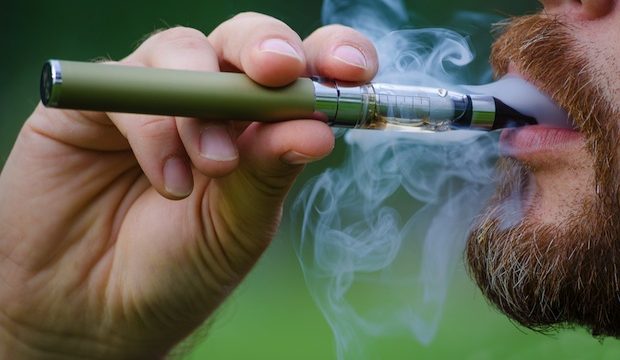Vaping Likely Cause Of Smoking Decline, Anti-Tobacco Bureaucrats Take Credit

“North Dakota only state spending enough on tobacco prevention”
That was a headline from the Grand Forks Herald this week regarding a report from the Campaign for Tobacco-Free Kids.
You really have to admire how the anti-tobacco bureaucrats are putting their priorities right up front these days. It’s almost like their goal isn’t so much public health, per se, but spending lots and lots of money on employing anti-tobacco bureaucrats.
Did you know that North Dakota’s anti-tobacco state agency – the Center for Tobacco Prevention and Control Policy which you probably know as BreatheND – is expected to have a $56 million ending fund balance this biennium? I wrote about it at the High Plains Reader this week.
But I think most taxpayers are interested not in how much money these government-sanctioned activists are spending, but in what impact they’re having on public health. Here’s what the Herald article lists as the accomplishment purchased with North Dakota’s most-in-the-nation funding for anti-tobacco activism:
The percentage of North Dakota high school students who smoked at least once in the past month plunged to 11.7 percent this year after hovering around 20 percent for the eight previous years, according to survey results provided by Thorson.
The question is, did that drop happen because of government funding for anti-tobacco programs? Or was it something else?
Consider this from a Bismarck Tribune report back in November: “The 2015 Youth Risk Behavior Survey shows that 12 percent of high school students statewide reported smoking at least once in the month before the survey. That’s down from 22 percent in 2005.”
Those are the same numbers the Herald reports, except the Tribune reports an additional number: “Meanwhile, 22 percent of students report having used an e-cigarette in the past month.”
There has been an almost equivalent rise in e-cigarette use alongside the decline in smoking.
I won’t go so far as to say that’s good – vaping isn’t without risk – but can we acknowledge that kids vaping is better situation than kids smoking? And can we also acknowledge that the decline in smoking has less to do with the anti-tobacco bureaucrats and their spending than with the rise of a popular and more healthy alternative to traditional tobacco use?
What’s ironic is that even as vaping seemingly reduces tobacco use more effectively than the anti-tobacco activists, the activists are shifting their mission towards…fighting vaping.




